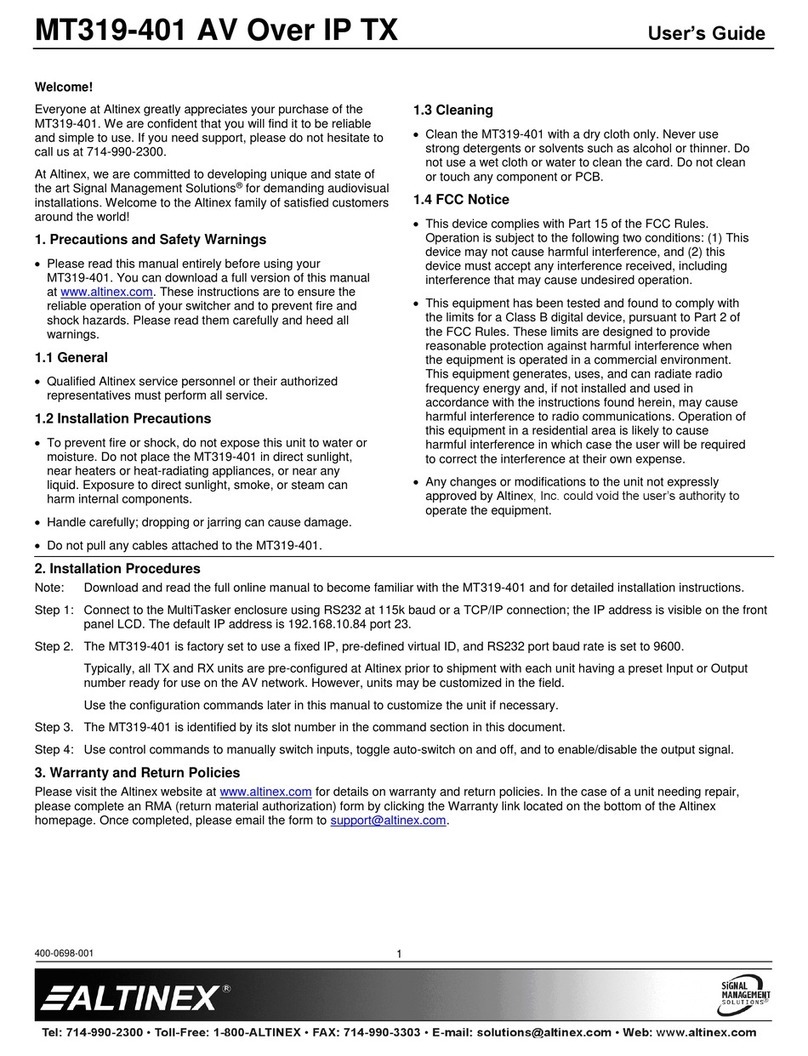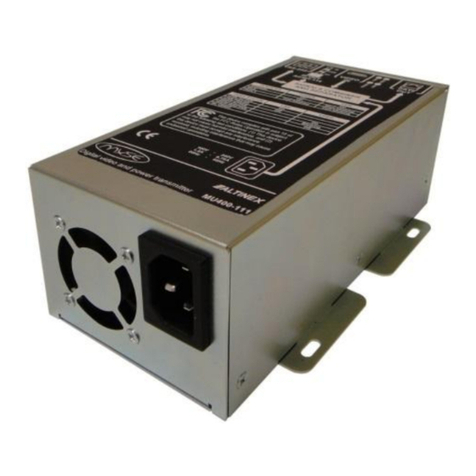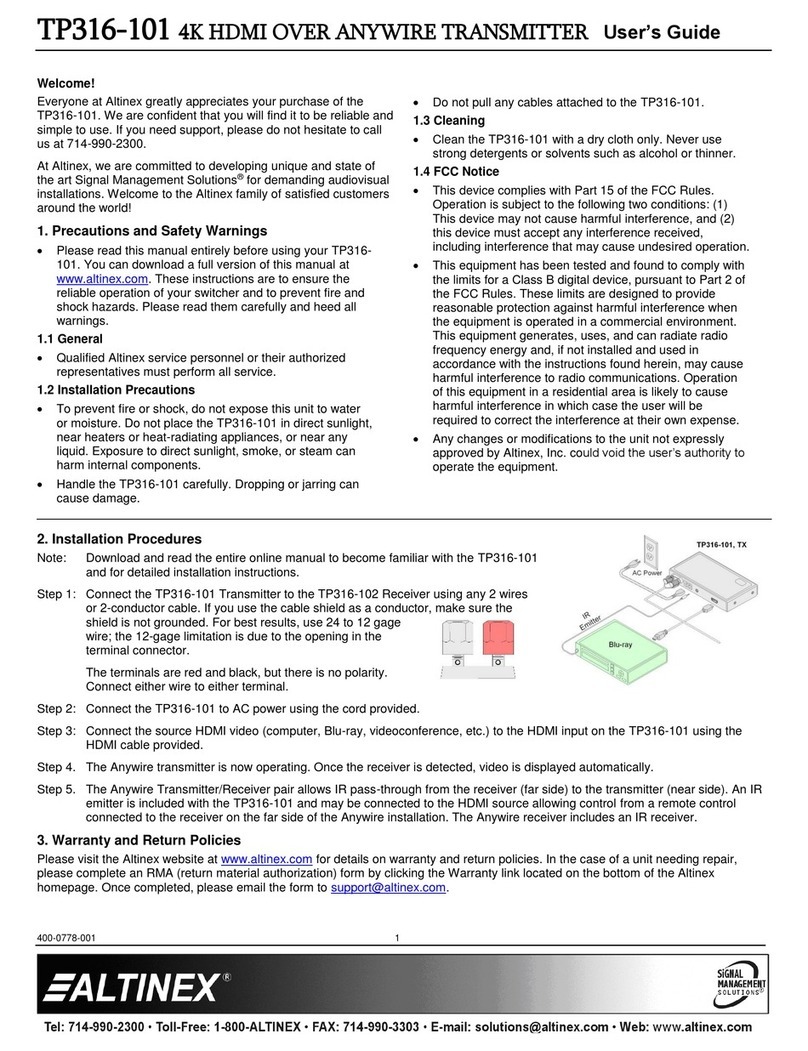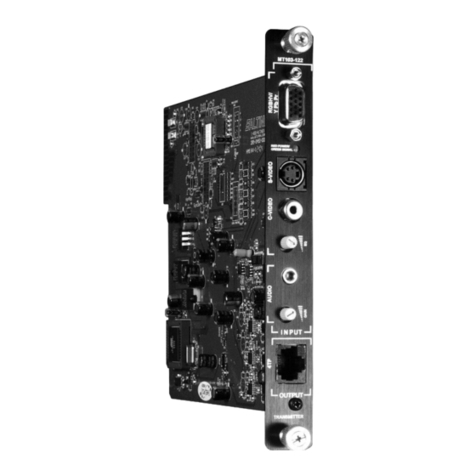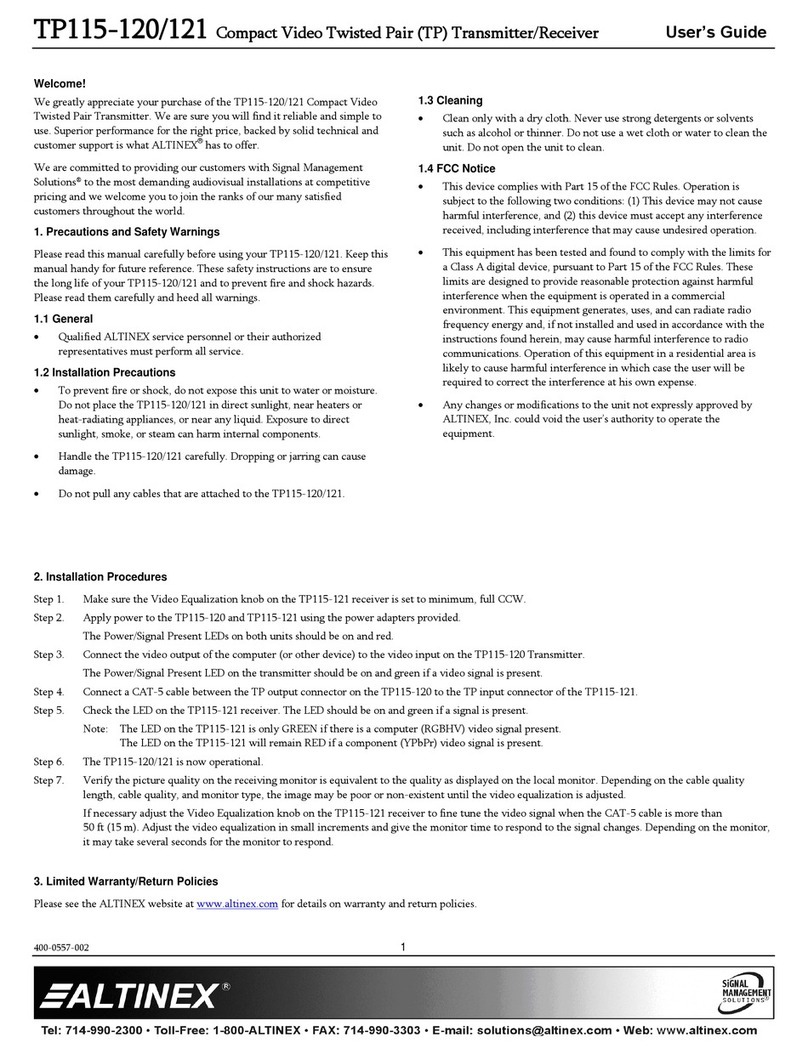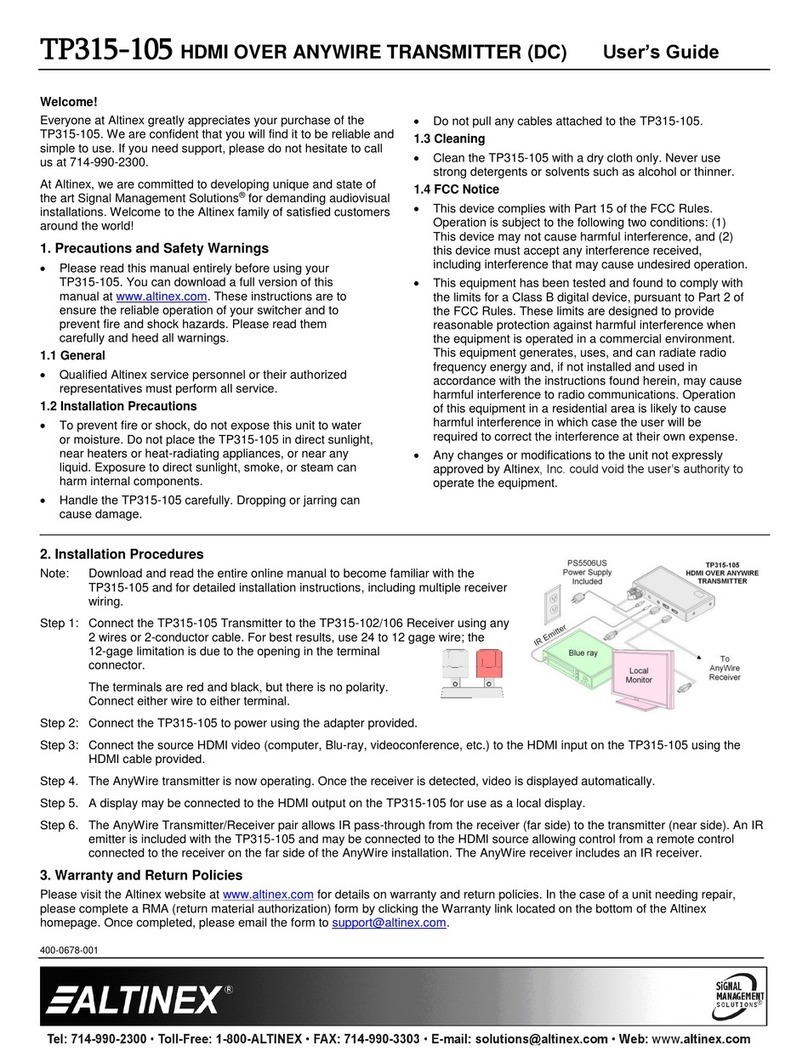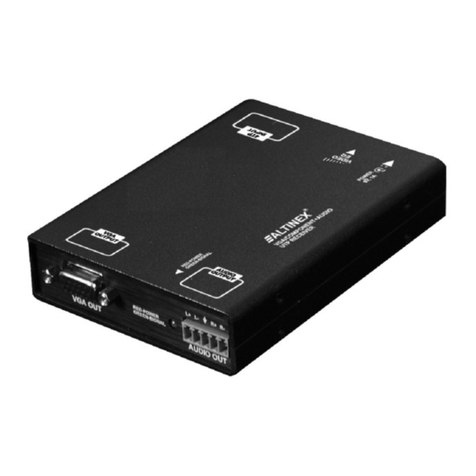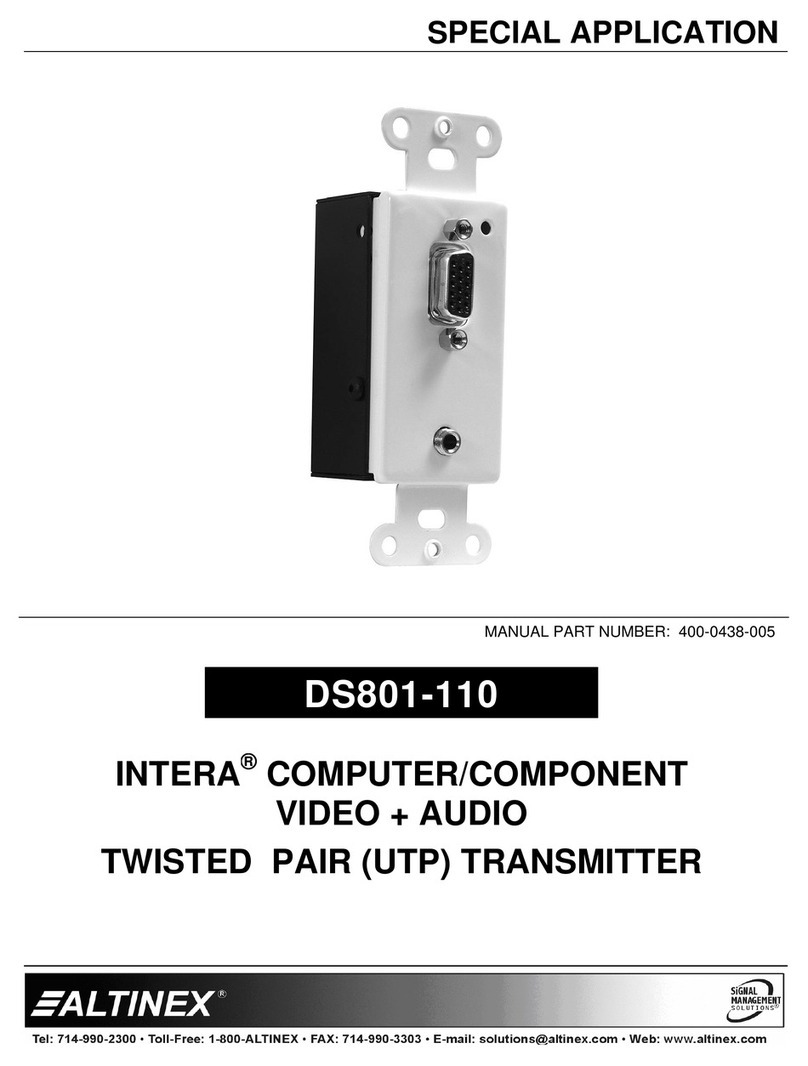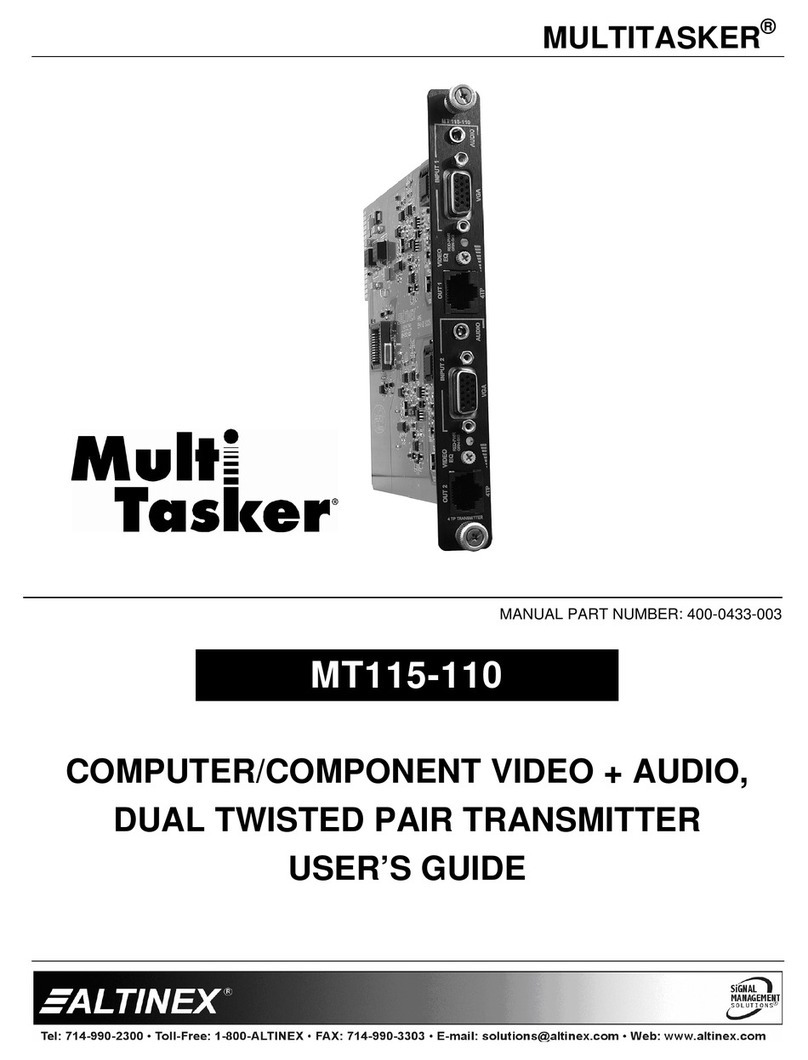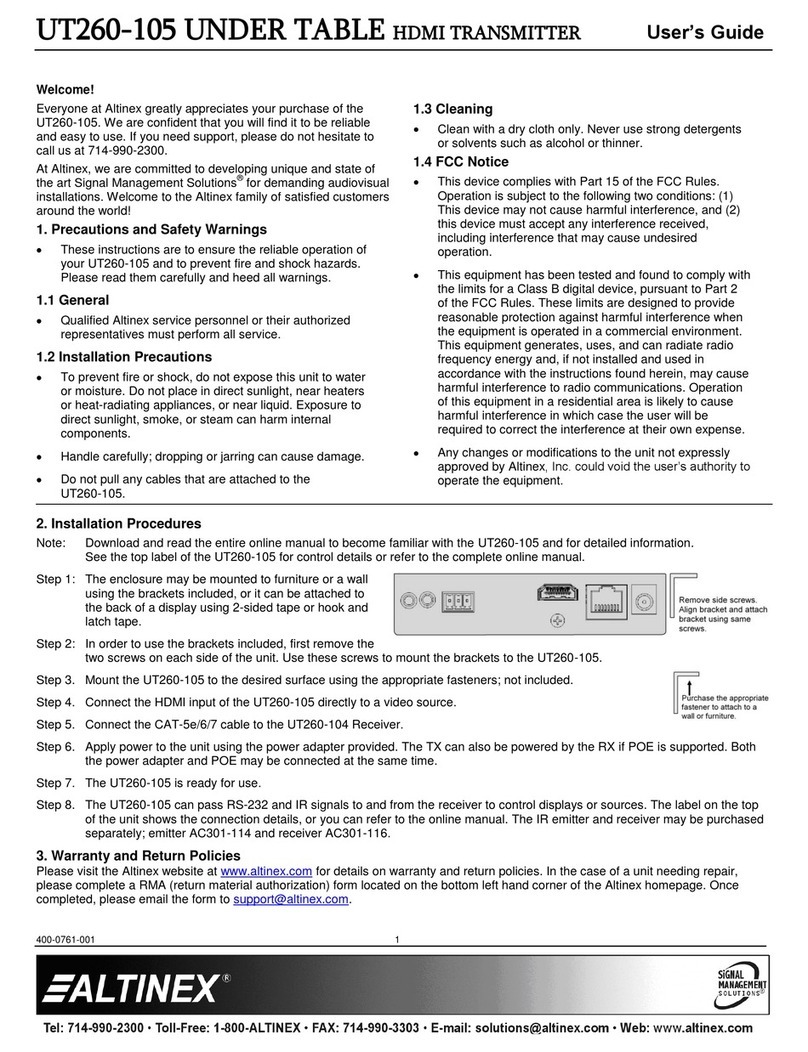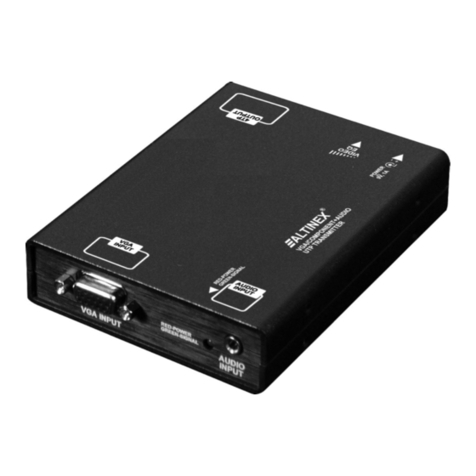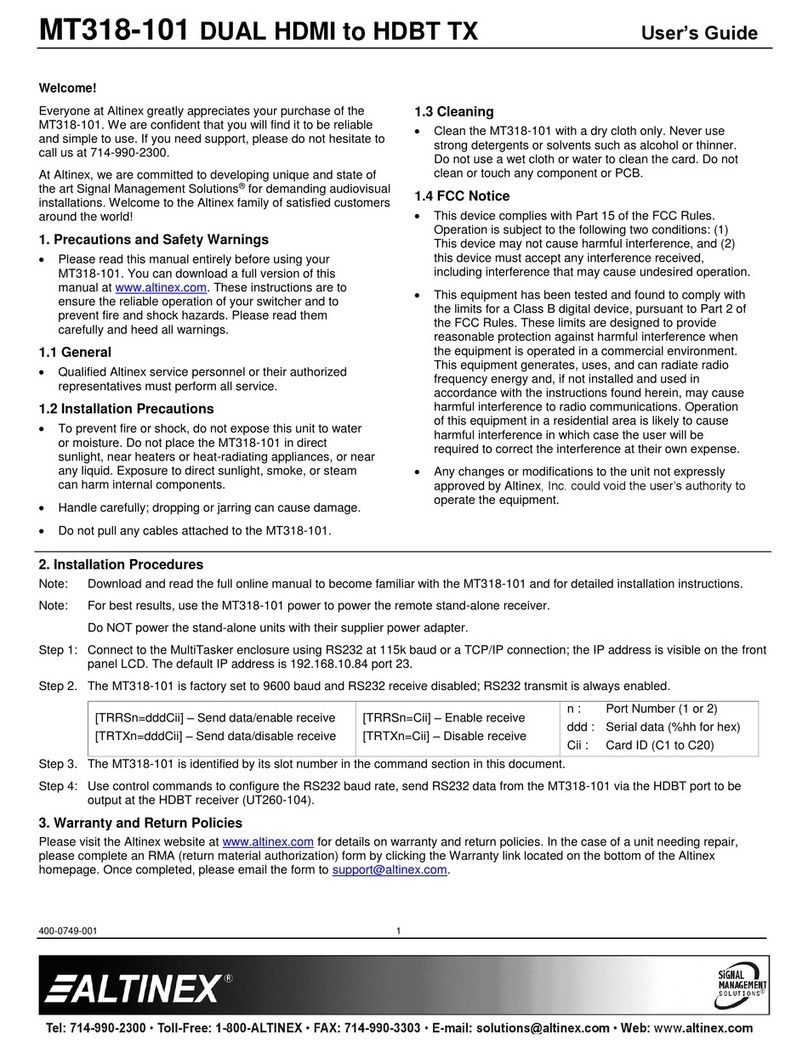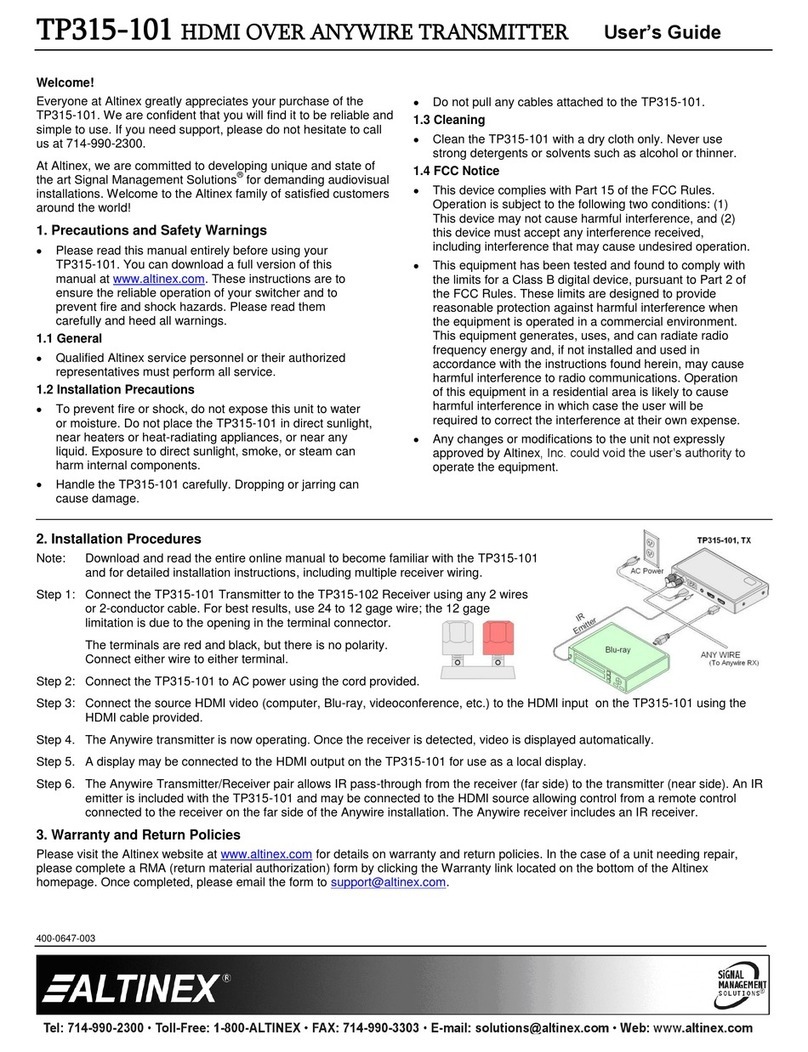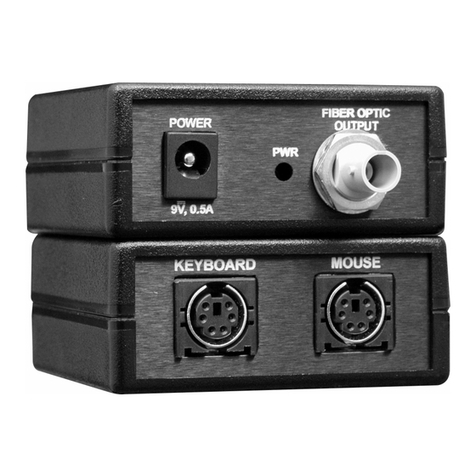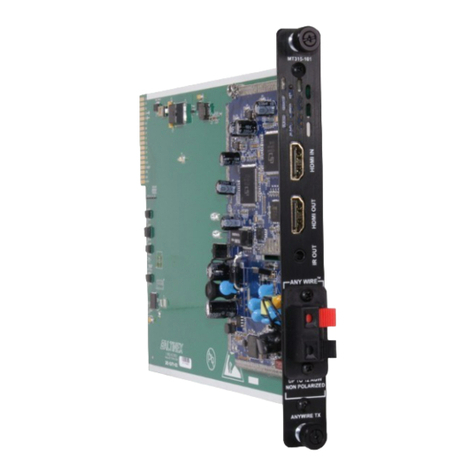
MULTITASKER
400-0373-0039
INSTALLING YOUR MT103-122 6
Step 1. Determine the settings required for Audio
Sync and Equalization. See Diagram 4 for
Switch Settings.
Step 2. Turn off power to the MultiTasker and
disconnect AC power.
Step 3. Remove a slot cover (MT200-101) from
one of the unused slots. Identify the slot
number and note that it is for RS-232
control.
Step 4. Slide the MT103-122 into an available slot
in the MultiTasker enclosure in order to
connect it to the bus. Make sure that the
card fits into place. Secure the card to the
MultiTasker by tightening the retainer
screws located on the top and bottom of
the card.
Step 5. Restore power to the enclosure and verify
the LED near the top of the card is on and
red indicating power is applied.
Step 6. Connect one of the following video
sources to the MT103-122 input:
RGBHV/YPbPr, S-Video,or C-Video.
Verify the LED turns green if using an
RGBHV signal.
Step 7. Connect the audio source to the AUDIO
INPUT jack.
Step 8. Connect aCAT-5/6 cable from the video
output of the MT103-122 Transmitter to
the Twisted Pair input port on the
MT103-123 or equivalent receiver.
Step 9. Verify the picture quality on the receiving
monitor is equivalent to the quality as
displayed on a local monitor. If the quality
of the image is poor or non-existent, it
may be necessary to adjust the video
equalization on the MT103-122 and/or
MT103-123. If hardware-controlled, adjust
using the knob on the panel; for software
control see the [EQ] command in the
OPERATION section of this manual.
OPERATION 7
7.1 RS-232 CONTROL
The MT103-122has many advanced
remote-control capabilities accessible through
standard RS-232 communication. Control may be
accomplished through a computer control system
or any other device capable of sending RS-232
communication.
7.1.1 RS-232 INTERFACE
The control commands for the MT103-122 are in
a simple ASCII character format.
1. Square brackets “[ ]” are part of the
command.
2. Use uppercase letters for all commands.
3. Spaces are not legal characters.
The cards in a MultiTasker system are capable
of performing various functions, as well as
providing feedback to the user or control
system. Commands instruct a card to perform
specific actions or request information about the
status of the card. Some commands do both
simultaneously.
A command that instructs the card only to
perform an action will generate feedback of “[ ]”.
The open bracket immediately followed by a
closedbracket indicates the card received a
valid command. If the command requested
information from the card, the feedback
generated by the card is the acknowledgement
of having received a valid command. Invalid
commands generate feedback of “[ERR001]”.
After processing a command, an “OK” or
[ERR001] will be returned as feedback if ‘F’ is
included at the end of a command string.
Commands ending in ‘S’ will be saved into
memory. Commands not ending in ‘S’ will still be
executed, but will not be restored when the
system is reset or powered off, then on.
